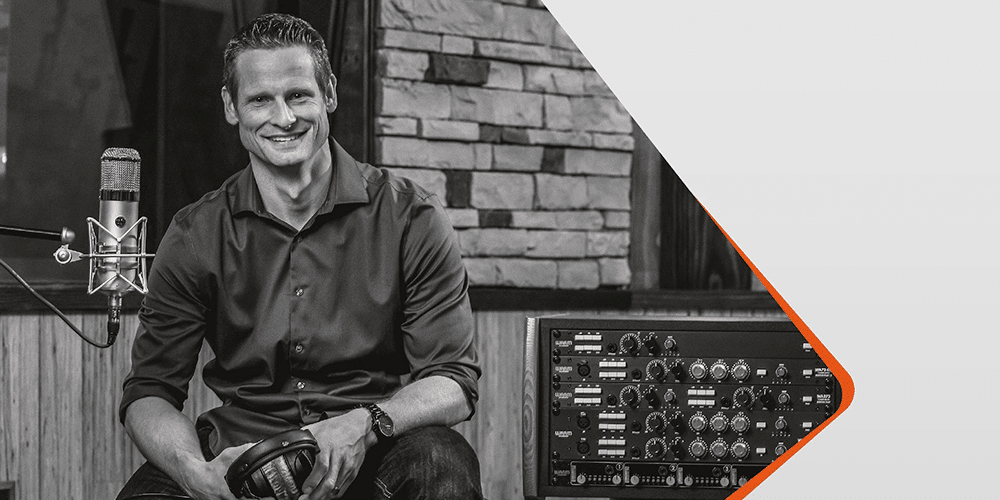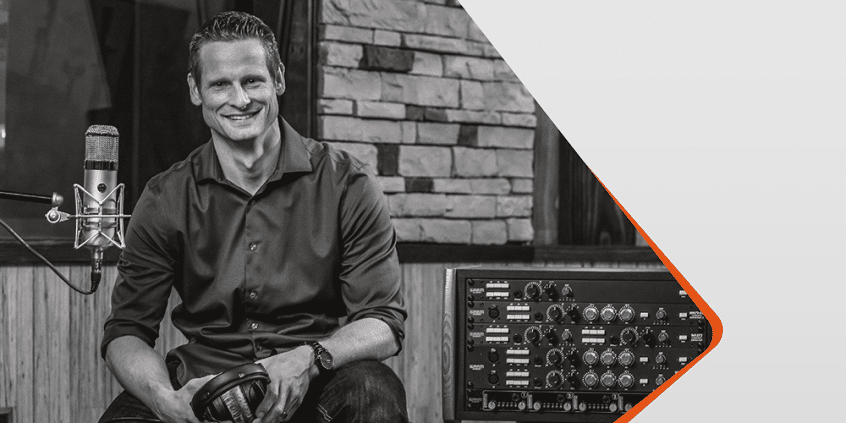What's the story behind Warm Audio?

The story of Warm Audio has been told in various interviews, conversations at NAMM, and hotly debated on forums. We wanted to let the founder and president, Bryce Young, give you the history & mission of Warm Audio in his own words –
Take us back to the beginning, where did the fascination with analog gear come from?
I first got into recording with my band when I was 16 years old. We recorded in a local studio that had “okay” gear, but we weren’t very happy with the result; it just didn’t sound good. I was shocked because my whole life I’d listened to records on the radio and they all sounded great.
We found another studio and, again, the result just wasn’t very good. So, I started experimenting. I bought one of those Roland all-in-one recorders where you could record eight tracks in total. Then, I got a USB interface and started recording myself and other people, worked at a local studio and also mixed a lot of people throughout college. Over time, I started to become fascinated with the gear.
I began to truly appreciate the impact that the quality of the recording gear could have on the music. I plugged my low-cost microphones into the Avalon 737 channel strip at my college's recording studio for the first time, and a new world opened up. It sounded completely different from what I’d experienced before – bigger, fatter, juicier and just more professional.
I started to understand why expensive vintage gear was held in such reverence.
Ever since that moment, I wanted to chase that professional sound.
When did you start building your own gear?
Around 2007, I started purchasing kits to build classic, vintage mic preamps on my own in my garage, and I started selling them on eBay. I got really interested in how the components influenced the results. These vintage circuits weren’t terribly complicated but a cheap or ill-equipped component in the signal path could seriously diminish the experience. I then reached out and got connected with component manufacturers. I was just a guy in my garage emailing premium manufacturers asking them questions, asking to buy tiny quantities, and asking how I could tweak existing parts to match discontinued components. To this day, I’m still surprised some of these partners ever indulged my questions and helped me create what I wanted. People started buying my versions of the kits with the components I chose. I realized there were people like me who wanted to capture “that” sound, but couldn’t get their hands on it or couldn’t afford it.
How did an unknown start-up manage to penetrate a narrowing analog recording market in less than a decade?
It was really fun to make the gear on my own, but I quickly came to the realization that if I was going to go down this path, I would need to go big and find a manufacturer that could build higher quantities faster than I could. Getting in with good distribution up front was incredibly helpful in starting out and growing the brand. We developed a relationship with a distributor that had connections to retailers like Guitar Center, Musician’s Friend and Sweetwater, and soon our products became readily available online. What made us unique at the time – which ultimately turned into a large fanbase today– is that we replicate all the gear people already wished they could own, or that they were using in plugin format, but we make it sound really good and at a price that isn't as expensive as those brands think it should be. We found customers that wanted the same things I did as a musician... they wanted to sound professional.
When we first started out, a lot of the distributors were telling me that the world was moving away from this stuff, that everyone was moving to plugins. I was like, well, they’re moving to digital because they can’t afford a $4,000 compressor or a $9,000 microphone. But when they hear that ours sounds as good as a $9,000 product at a significantly lower price, they’re going to wonder if they really do want that digital compromise or the real thing. We’re finding–and the customers are proving– that people actually want the real thing.
How do you keep costs so low without taking a major hit to the quality of the gear?
This is really important, and it’s also not super complicated. We have proven our “Warm Formula” time and time again by showing that high end designs can hit the market far below traditional boutique price points. We accomplish this by building relationships with boutique component suppliers that scale to our demand. Through increased volume, these component manufacturers improve their efficiency and offer us aggressive pricing. Warm Audio passes these cost savings onto our customers along with low markups. Warm Audio seeks success through volume sales not price-gauging our customers. Amazingly, we do all of this while also maintaining a tight quality control process. Every single piece of gear– literally every single piece –is opened up and powered on at our Austin, TX headquarters, and hand-inspect for power issues, noise issues, damage, tonal continuity, and functionality. While we have fantastic manufacturing partners, we easily ensure the quality of our gear through hand inspections so that we can provide boutique-quality products without the traditionally high markup.
Where do you see the market going?
At their core, most of today’s musicians are chasing the legendary tone that inspired them to make music and there is something inherently creative about the nostalgia of classic recordings made in world-class studios. Today, a lot of musicians & producers are using plugins…because almost all plugins now are emulating vintage analog gear with tubes and transformers, old circuits, and old designs. Musicians are trying to digitally emulate the analog sound that is out of reach. There is a sort of fanaticism for vintage, analog tone. For good reason: It sounds better. We’re trying to put that legendary sound within reach for every artist.
We believe that our products truly deliver the same quality sound as the vintage gear, or in some cases better than, a 60-year-old microphone, and we accept the challenge to be compared against the greatest products of all time. Another thing we think is that more people can benefit from analog over digital in general, even if not for everything. We want them to consider that instead of using a virtual mic pre, compressor, or EQ, give a real one a shot and see if or how it changes your mixes and approach.
Try to breathe some real, legendary analog tone into your digital world and see if it makes a difference.

